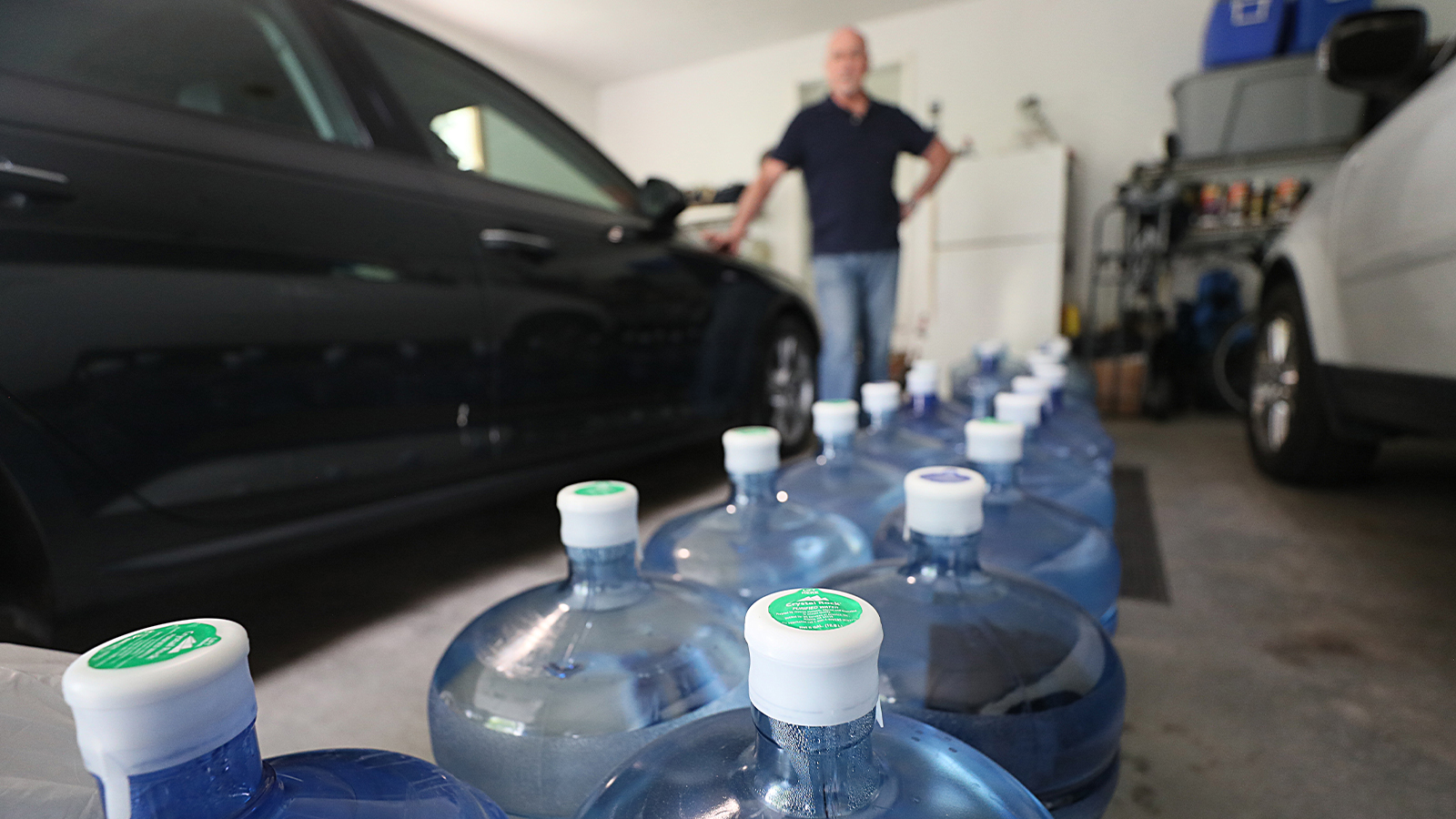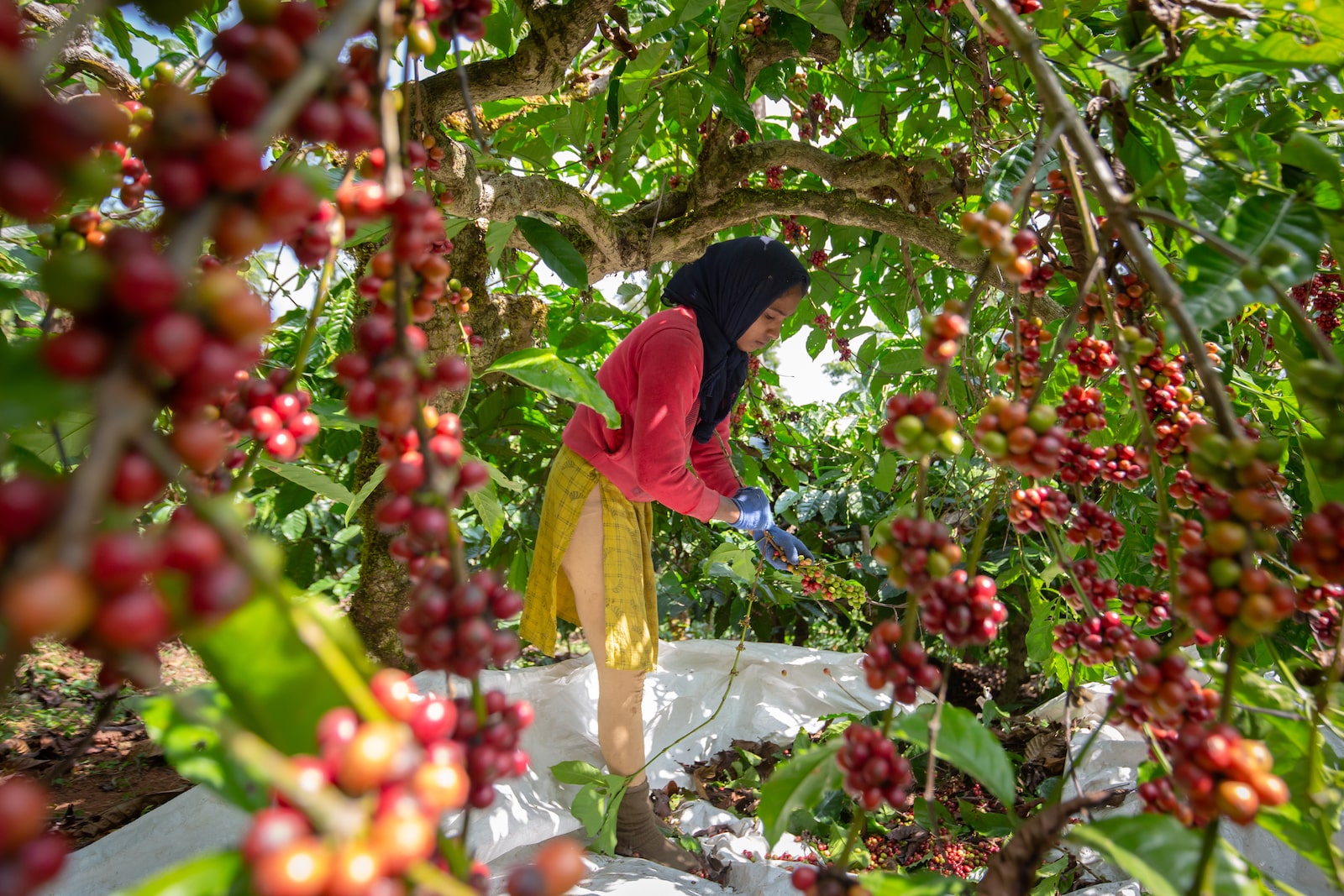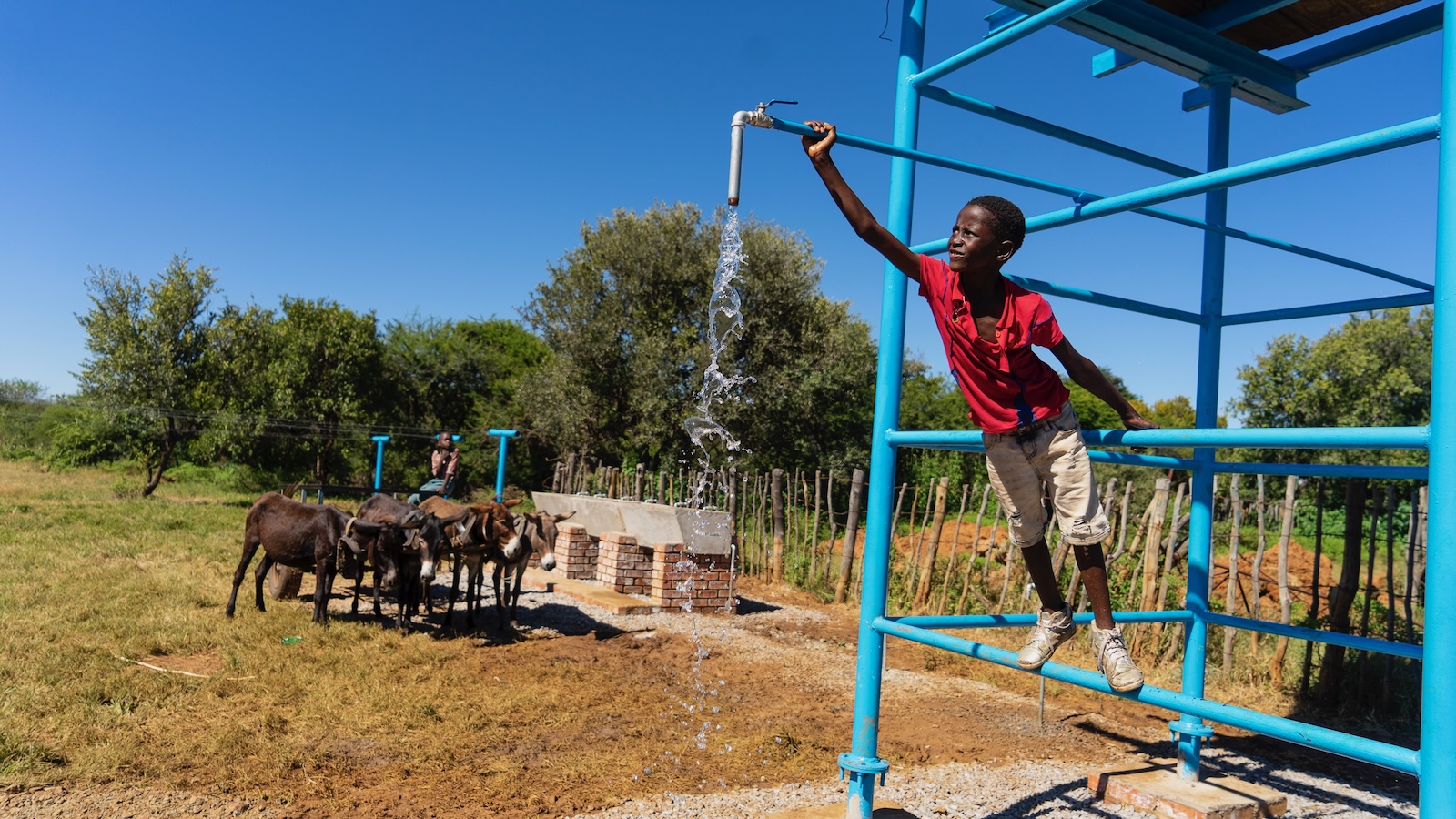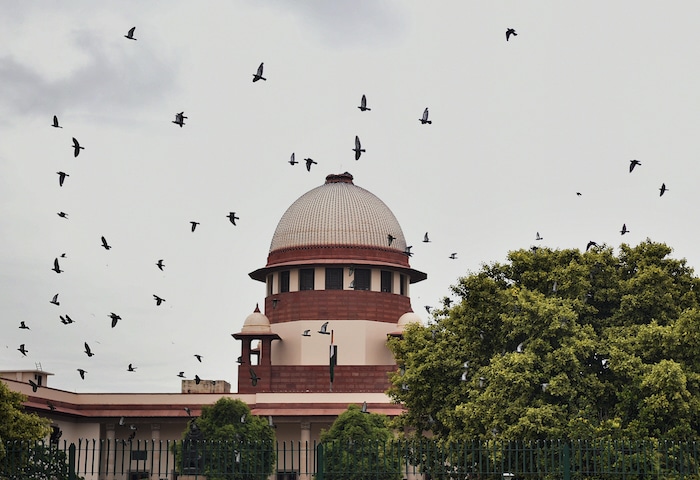Sustainable healthcare aims to reduce waste, pollution, and energy usage associated with traditional healthcare procedures….
The post Guest Opinion: The Role of Plant-Based Medicine in Sustainable Healthcare appeared first on Earth911.

Sustainable healthcare aims to reduce waste, pollution, and energy usage associated with traditional healthcare procedures….
The post Guest Opinion: The Role of Plant-Based Medicine in Sustainable Healthcare appeared first on Earth911.
How do you kickstart an industry? The $100 million XPrize for Carbon Removal recently announced…
The post Best of Earth911 Podcast: Nikki Batchelor and Mike Leitch Share XPRIZE Carbon Removal Progress appeared first on Earth911.
Some 70 years after they entered widespread chemical use, the federal government is finally regulating the so-called “forever chemicals” found in everything from nonstick cookware to menstrual products.
The Environmental Protection Agency on Wednesday announced the nation’s first drinking water standards for six types of per- and polyfluoroalkyl substances, known as PFAS. These long-lasting synthetic chemicals don’t break down naturally in the environment and have been linked to cancer, heart and liver problems, developmental damage, and other health issues.
Under the new rule, drinking water concentrations of two of the most thoroughly studied and prevalent of these substances — PFOA and PFOS — will be capped at the lowest limit that the EPA believes is technologically possible, about 4 parts per trillion, reflecting scientists’ understanding that there is no safe exposure level for them. Three other common PFAS will be limited to 10 parts per trillion, either measured on their own, in combination with each other, or with one otherwise unregulated chemical.
The compounds being regulated represent a fraction of the entire class of chemicals — more than 15,000 distinct variants fall under the PFAS umbrella. Still, the EPA estimates that its new rules will protect some 100 million people from exposure and prevent tens of thousands of serious illnesses, especially cancers.
“We are one huge step closer to shutting off the tap for forever chemicals once and for all,” agency head Michael Regan told reporters on Tuesday. He also announced nearly $1 billion in funding through the Bipartisan Infrastructure Law to help states and private well owners test for and clean up any contamination. The funding adds to the $21 billion that Congress already made available through the legislation to improve drinking water systems, $9 billion of which had been earmarked specifically for cleaning up this class of chemicals.
The regulations announced Tuesday represent the EPA’s strongest action yet to address the threat of forever chemicals, one likely motivated by escalating concerns about ubiquitous contamination in people’s bodies and the environment. According to the Centers for Disease Control and Prevention, virtually all Americans have PFAS in their blood, and researchers have found the chemicals in people’s brains, placentas, livers, and umbilical cords.
Forever chemicals have grown so widespread that rainwater in most places on Earth contains unsafe concentrations. A study published this week found harmful levels in 31 percent of groundwater tested around the world — even though the samples were taken far from any obvious source of contamination.
Chemical companies knew as early as the 1970s that PFAS were building up in people’s bodies and could cause serious consequences but continued to use them for decades. Big U.S. manufacturers like 3M voluntarily stopped producing the chemicals in the early 2000s, but face potentially billions of dollars in damages from consumer protection lawsuits filed by more than half of the attorneys general in the United States.

“How do you regulate something that’s already out of the box?” asked Daniel Jones, associate director for the Michigan State University Center for PFAS Research. “They’re still in the environment, in the soil, and in the water.” Now, he says, the focus is on cleaning up.
In 2016, the EPA published a nonbinding public health advisory recommending that drinking water contain no more than 70 parts per trillion of PFOA and PFOS. In 2021, it began working on a “strategic roadmap” to formalize regulations and released a proposal last year that drew some 120,000 comments. The final regulation adds maximum contaminant levels for PFNA, PFHxS, and GenX chemicals, rather than just restricting their combined use as previously proposed, although at higher concentrations than allowed for PFOA and PFOS.
While the EPA deliberated, at least 11 states adopted rules limiting PFAS in drinking water. Those regulations will be superseded by the federal guideline.
Environmental and public health experts cheered the rule, even as they acknowledged its shortcomings. Katie Pelch, an environmental health scientist for the Natural Resources Defense Council, said regulating PFAS on a chemical-by-chemical basis is risky. Manufacturers could swap a restricted compound for something similar that might be less studied yet equally hazardous.
“We need to define PFAS more broadly and take action on the entire class of chemicals, so we’re not just trading one toxic chemical for another,” Pelch told Grist. Although the EPA is testing for over two dozen of the chemicals in drinking water, a 2023 study by Pelch and her colleagues found a dozen compounds that the agency isn’t including. The other problem is the sheer amount of time it would take to evaluate every PFAS individually — potentially many lifetimes.
The EPA did not respond to Grist’s request for comment, but a senior Biden administration implied during a press call that, to make the most robust policy possible, the agency chose to address chemicals for which there is the largest body of evidence proving their toxicity.
“We feel very confident that we have designed a very durable rule, well within our statutory authority, that begins to protect people from harmful pollutants that are showing up in their drinking water,” the official said.
States have five years to comply with the new drinking water standards — three years to test their water supplies and two to reduce concentrations of the regulated PFAS, if necessary. For up to 10 percent of the 66,000 water systems subject to the rule, that could mean upgrading their filtering processes, according to the EPA. Available options, funded by the Bipartisan Infrastructure Law, include common filtration methods already in use today, such as a granular activated carbon system, similar to a charcoal filter, or reverse osmosis which filters out contaminants using a semi-permeable membrane.
The agency lets utilities decide which method works best for their community. In Wilmington, North Carolina, a granular activated carbon system has already been effective in removing the PFAS targeted by the EPA’s rule, and the same technology may help remove others that are not subject to the regulation.
“The state that you live in shouldn’t influence whether or not PFAS are in your drinking water,” said Pelch. “The EPA will help us address that.” Although the new rules don’t fully reign in the sprawling blanket of forever chemicals in our environment, every step forward matters.
Editor’s note: The Natural Resources Defense Council is an advertiser with Grist. Advertisers have no role in Grist’s editorial decisions.
This story was originally published by Grist with the headline EPA finalizes the nation’s first PFAS limits in drinking water on Apr 10, 2024.
This story was produced by Grist and co-published with Slate.
When Henri Kunz was growing up in West Germany in the 1980s, he used to drink an instant coffee substitute called Caro, a blend of barley, chicory root, and rye roasted to approximate the deep color and invigorating flavor of real coffee. “We kids drank it,” Kunz remembered recently. “It had no caffeine, but it tasted like coffee.”
As an adult, Kunz loves real coffee. But he also believes its days are numbered. Climate change is expected to shift the areas where coffee can grow, with some researchers estimating that the most suitable land for coffee will shrink by more than half by 2050, and hotter temperatures will make the plants more vulnerable to pests, blight, and other threats. At the same time, demand for coffee is growing, as upwardly mobile people in traditionally tea-drinking countries in Asia develop a taste for java.
“The difference between demand and supply will go like that,” Kunz put it during a Zoom interview, crossing his arms in front of his chest to form an X, like the “no good” emoji. Small farmers could face crop failures just as millions of new people develop a daily habit, potentially sending coffee prices soaring to levels that only the wealthy will be able to afford.
To stave off the looming threats, some agricultural scientists are hard at work breeding climate-resilient, high-yield varieties of coffee. Kunz, the founder and chair of a “flavor engineering” company called Stem, thinks he can solve many of these problems by growing coffee cells in a laboratory instead of on a tree. A number of other entrepreneurs are taking a look at coffee substitutes of yore, like the barley beverage Kunz grew up drinking, with the aim of using sustainable ingredients to solve coffee’s environmental problems — and adding caffeine to reproduce its signature jolt.



Stem’s cell-cultured coffee powder is prepared, roasted, and extracted. Courtesy of Jaroslav Monchak / STEM
A crop of startups, with names like Atomo, Northern Wonder, and Prefer, is calling this category of throwbacks “beanless coffee,” even though in some cases their products contain legumes. Beanless coffee “gives you that legendary coffee taste and all the morning pick-me-up you crave, while also leaving you proud that you’re doing your part to help unf–k the planet,” as the San-Francisco based beanless coffee company Minus puts it. But it’s unclear whether coffee drinkers — deeply attached to the drink’s particular, ineffable taste and aroma — will embrace beanless varieties voluntarily, or only after the coming climate-induced coffee apocalypse forces their hand.
Coffea arabica — the plant species most commonly cultivated for drinking — has been likened to Goldilocks. It thrives in shady environments with consistent, moderate rainfall and in temperatures between 64 and 70 degrees Fahrenheit, conditions often found in the highlands of tropical countries like Guatemala, Ethiopia, and Indonesia. Although coffee plantations can be sustainably integrated into tropical forests, growing coffee leads to environmental destruction more often than not. Farmers cut down trees both to make room for coffee plants and to fuel wood-burning dryers used to process the beans, making coffee one of the top six agricultural drivers of deforestation. When all of a coffee tree’s finicky needs are met, it can produce harvestable beans after three to five years of growth, and eventually yields 1 to 2 pounds of green coffee beans per year.

If arabica is Goldilocks, climate change is an angry bear. For some 200 years, humans have been burning fossil fuels, spewing planet-warming carbon dioxide into the air. The resulting floods, droughts, and heatwaves, as well as the climate-driven proliferation of coffee borer beetles and fungal infections, are all predicted to make many of today’s coffee-growing areas inhospitable to the crop, destroy coffee farmers’ razor-thin profit margins, and sow chaos in the world’s coffee markets. That shift is already underway: Extreme weather in Brazil sent commodity coffee prices to an 11-year high of $2.58 per pound in 2022. And as coffee growers venture into new regions, they’ll tear down more trees, threatening biodiversity and transforming even more forests from carbon sinks into carbon sources.
At many times in the past, coffee has been out of reach for most people, so they found cheaper, albeit caffeine-free, alternatives. Caro and other quaint instant beverage mixes, like Postum in the U.S. and caffè d’orzo in Italy, were popular during World War II and in the following years, when coffee was rationed or otherwise hard to come by. But the practice of brewing non-caffeinated, ersatz coffee out of other plants is even older than that. In the Middle East, people have used date seeds to brew a hot, dark drink for hundreds or perhaps thousands of years. In pre-Columbian Central America, Mayans drank a similar beverage made from the seeds of ramón trees found in the rainforest. In Europe and Western Asia, drinks have been made out of chicory, chickpeas, dandelion root, figs, grains, lupin beans, and soybeans. These ingredients have historically been more accessible than coffee, and sometimes confer purported health benefits.

Today’s beanless-coffee startups are attempting to put a modern spin on these time-honored, low-tech coffee substitutes. Northern Wonder, based in the Netherlands, makes its product primarily out of lupin beans — also known as lupini — along with chickpeas and chicory. Atomo, headquartered in Seattle, infuses date seeds with a proprietary marinade that produces “the same 28 compounds” as coffee, Atomo boasts. Singapore-based Prefer makes its brew out of a byproduct of soymilk, surplus bread, and spent barley from beer breweries, which are then fermented with microbes. Minus also uses fermentation to bring coffee-like flavors out of “upcycled pits, roots, and seeds.” All these brands add caffeine to at least some of their blends, aiming to offer consumers the same energizing effects they get from the real deal.
“We’ve tried all of the coffee alternatives,” said Maricel Saenz, the CEO of Minus. “And what we realize is that they give us some resemblance to coffee, but it ultimately ends up tasting like toasted grains more than it tastes like coffee.”

In trying to explain what makes today’s beanless coffees different from the oldfangled kind, David Klingen, Northern Wonder’s CEO, compared the relationship to the one between modern meat substitutes and more traditional soybean products like tofu and tempeh. Many plant-based meats contain soybeans, but they’re highly processed and combined with other ingredients to create a convincing meat-like texture and flavor. So it is with beanless coffee, relative to Caro-style grain beverages. Klingen emphasized that he and his colleagues mapped out the attributes of various ingredients — bitterness, sweetness, smokiness, the ability to form a foam similar to the crema that crowns a shot of espresso — and tried to combine them in a way that produced a well-rounded coffee facsimile, then added caffeine.
By contrast, traditional coffee alternatives like chicory and barley brews have nothing to offer a caffeine addict; Atomo, Minus, Northern Wonder, and Prefer are promising a reliable daily fix.
“Coffee is a ritual and it’s a result,” said Andy Kleitsch, the CEO of Atomo. “And that’s what we’re replicating.”

Each of these new beanless coffee companies has a slightly different definition of sustainability. Northern Wonder’s guiding light is non-tropical ingredients, “because we want to make a claim that our product is 100 percent deforestation free,” Klingen said. Almost all its ingredients are annual crops from Belgium, France, Germany, Switzerland, and Turkey, countries whose forests are not at substantial risk of destruction from agriculture. Annual crops grow more efficiently than coffee trees, which require years of growth before they begin producing beans. A life cycle analysis of Northern Wonder’s environmental impacts, paid for by the company, shows that its beanless coffee uses approximately a twentieth of the water, generates less than a quarter of the carbon emissions, and requires about a third of the land area associated with real coffee agriculture.
Michael Hoffmann, professor emeritus at Cornell University and the coauthor of Our Changing Menu: Climate Change and the Foods We Love and Need, said he was impressed with Northern Wonder’s life cycle analysis, which he described as nuanced and transparent about the limitations of its data. He praised the idea of using efficient crops, saying that some of those used by beanless coffee companies “yield far more per unit area than coffee, which is also a big plus.”

But there are trade-offs associated with higher yields. Daniel El Chami, an agricultural engineer who is the head of sustainability research and innovation for the Italian subsidiary of the fertilizer and plant nutrition company Timac Agro International, pointed out that higher-yield crops tend to use more fertilizer, which is manufactured using fossil fuels in a process that emits carbon. Crops that use land and other resources efficiently can require several times more fertilizer than sustainably grown coffee, he said. For this reason, El Chami just didn’t see how Northern Wonder could wind up emitting less than a quarter of coffee’s emissions.
Other beanless coffee companies are staking their sustainability pitch on their repurposing of agricultural waste. Atomo’s green cred is premised on the fact that its central ingredients, date seeds, are “upcycled” from farms in California’s Coachella Valley. Whereas date farmers typically throw seeds away after pitting, Atomo pays farmers to store the pits in food-safe tote bags that get picked up daily. Atomo’s current recipe also includes crops from farther afield, like ramón seeds from Guatemala and caffeine derived from green tea grown in India, but Kleitsch said they’re looking to add even more upcycled ingredients.

Food waste is a major contributor to climate change, and Hoffmann, the Cornell professor, said repurposing it for beanless coffee is “a very good approach.” Minus, which also uses upcycled date pits, claims its first product, a canned beanless cold brew (which is not yet available in stores), uses 94 percent less water and produces 86 percent less greenhouse gas emissions than the real thing. Those numbers are based on a life cycle analysis that Saenz, Minus’ CEO, declined to share with Grist because it was being updated.
(Atomo expects to release a life cycle analysis this spring, and Prefer is planning to conduct a study sometime this year.)
Despite beanless coffee companies’ impressive sustainability claims, not everyone is convinced that building an alternative coffee industry from scratch is better than trying to make the existing coffee industry more sustainable — by, for instance, helping farmers grow coffee interspersed with native trees, or dry their beans using renewable energy.
El Chami thinks the conclusion that coffee supply will dwindle in an overheating world is uncertain: A review of the research he coauthored found that modelers have reached contradictory conclusions about how climate change will change the amount of land suitable for growing coffee. Although rising temperatures are certainly affecting agriculture, “climate change pressures are overblown from a marketing point of view by private interests seeking to create new needs with higher profit margins,” El Chami said. He added that the multinational companies that buy coffee from small farmers need to help their suppliers implement sustainable practices — and he hoped beanless coffee companies would do the same.
Whether demand for beanless coffee will increase depends a great deal on how much consumers like the taste.
I, for one, enjoyed the $5 Atomo latte that I tried at the Midtown Manhattan location of an Australian cafe chain called Gumption Coffee — the only place on Earth where Atomo is being sold. The pale, frothy concoction tasted slightly sweet and very smooth. Atomo describes its espresso blend as having notes of “dark chocolate, dried fruit, and graham cracker.” If I hadn’t known it was made with date seeds instead of coffee beans, I would have said it was a regular latte with a dash of caramel syrup added.

The Northern Wonder filter blend that I ordered from the Netherlands (about $12 for a little more than a pound of grounds, plus about $27 for international shipping) had to overcome a tougher test: I wanted to drink it black, the way I do my regular morning coffee. I brewed it in my pour-over Chemex carafe, and the dark liquid dripping through the filter certainly looked like coffee. But the aroma was closer to chickpeas roasting in the oven — not an unpleasant smell, just miles away from the transcendent scent of arabica beans. The flavor was also off, though I couldn’t quite put my finger on what was wrong. Was it a lack of acidity, or a lack of sweetness? It wasn’t too bitter, and it left a convincing tannic aftertaste in my mouth. After a few sips, I found myself warming up to it, even though it obviously wasn’t coffee. My Grist colleague Jake Bittle had a similar experience with Northern Wonder, describing the flavor it settled into as “weird Folgers.” If real coffee suddenly became scarce or exorbitantly priced, I could see myself drinking Northern Wonder or something like it. It would certainly be better than forgoing coffee’s flavor and caffeine entirely by drinking nothing at all in the morning, or acclimating to the entirely different ritual and taste of tea.
Klingen concedes that the aroma of beanless coffee needs work. Northern Wonder is developing a bean-like product that, when put through a coffee grinder, releases volatile compounds similar to those that give real coffee its powerful fragrance, like various aldehydes and pyrazines. But beanless coffee could win over some fans even if it doesn’t mimic coffee’s every attribute. Klingen said drinkers often rate his product higher for how much they like it than for how similar it is to coffee. “With Oatly, oat milks or [other] alt milks, there you see the same,” he said. When you ask consumers if oat milk tastes like milk, they say, “‘Eh, I don’t know.’ But is it tasty? ‘Yes.’”

Just as the dairy industry has tried to prevent alternative milk companies from calling their products “milk,” some people raise an eyebrow at the term “beanless coffee.” Kunz — the German entrepreneur who grew up drinking Caro and is now trying to grow coffee bean cells in a lab — takes issue with using the word coffee to describe products made out of grains, fruits, and legumes. “What we do — taking a coffee plant part, specifically a leaf from a coffee tree — it is coffee, because it’s the cell origin of coffee,” Kunz said. Drinks made from anything else, he insists, shouldn’t use the word. Kunz’s cell-cultured coffee product hasn’t been finalized yet and, much like lab-grown meat, faces fairly steep regulatory hurdles before it can be sold in Europe or the United States.
The specter of plant-based meat and dairy looms large over the nascent beanless coffee industry. A slew of startups like Beyond Meat and Impossible Foods hit the scene in the mid-2010s with products that they touted as convincing enough to be able to put animal agriculture out of business. But in recent years, these companies have faced declining sales in the face of concerns about health, taste, and price.
Jake Berber, the CEO and cofounder of Prefer, fears something similar could happen to beanless coffee businesses. “My hope for everyone in the industry is to keep pushing out really delicious products that people enjoy so that the whole industry of beanless coffee, bean-free coffee, can profit from that, and we can sort of help each other out,” he said.

Different beanless coffee companies are staking out different markets, with some positioning themselves as premium brands. Saenz wouldn’t say how much Minus wants to charge for its canned cold brew, but she said it will be comparable to the “high-end side of coffee, because we believe we compete there in terms of quality.” Atomo is putting the finishing touches on a factory in Seattle with plans to sell its beanless espresso to coffee shops for $20.99 per pound — comparable to a specialty roast.
“The best way to enjoy coffee is to go to a coffee shop and have a barista make you your own lovingly made product,” Kleitsch said. Atomo is aiming to give consumers a “great experience that they can’t get at home.”
In contrast, Northern Wonder and Prefer are targeting the mass market. Northern Wonder is sold in 534 grocery stores in the Netherlands and recently became available at a leading supermarket in Switzerland. Prefer, meanwhile, is selling its blend to coffee houses, restaurants, hotels, and other clients in Singapore with a promise to beat the price of their cheapest arabica beans. Berber predicts that proposition will get more and more appealing to buyers and consumers in the coming years as the cost of even a no-frills, mediocre espresso drink approaches, and then surpasses, $10. A warming planet will help turn coffee beans into a luxury product, and middle-class customers will get priced out. Then, Prefer’s bet on a climate-proof coffee replacement will pay off.
“We will, in the future, be the commodity of coffee,” Berber said.
This story was originally published by Grist with the headline The best coffee for the planet might not be coffee at all on Apr 10, 2024.
Young people have for generations signed their names in history’s ledger as agents of change. James Monroe and Alexander Hamilton celebrated their 25th birthdays during the Revolutionary War. Nearly two centuries later, college-age Black men and women mobilized for the rights they had been denied since the nation’s founding. The youth of today have seized the baton passed to them by their elders. They have raised their voices in urgent anger to demand action for the defining issue of their lives: the climate emergency.
Yet only a few governments at any level, in any country, have answered their demands for action. On Wednesday, to help address that, Bloomberg Philanthropies — the nonprofit funded by former New York Mayor and one-time Democratic presidential candidate Michael Bloomberg — has launched the Youth Climate Action Fund. It intends to help 100 cities worldwide better incorporate the voices and visions of young people into how they imagine and enact policies.
“We want to help bring more and more powerful voices into climate activism,” said James Anderson, who leads the philanthropy’s government innovation programs and helped design the fund. “And we also want to make sure and help local governments invite all of the people that want to make a difference in their city on climate into the effort in ways that are meaningful to them.”
The funds it has awarded to cities in 38 countries across six continents should enable just that kind of involvement. With the announcement, each city will receive an initial disbursement of $50,000. Should any mayor respond with adequate urgency and commit, within six months, the money to programs or projects that involve youth leadership in local climate action, their city will receive an additional $100,000 to further support youth-led efforts.
When typical funding announcements for climate efforts often reach into the millions and billions or even hundreds of billions, a five- or six-figure payout might sound paltry. Yet it can make an enormous impact — especially in cities and countries that need it most.
“I’m shocked. I’m shocked, but in a good way, because that money is a lot, especially here in Zimbabwe, and I believe that it could do a lot of great things in our city,” said Nozinhle Gumede, a 21-year-old climate activist from Bulawayo, Zimbabwe. Bulawayo, a city of 1.2 million in the country’s southwest, is among those selected for the Youth Climate Action Fund. Gumede hopes to see the money used to support youth-led organizations actively helping local communities to adapt to climate change, and to create capacity at the city level for young people to advise the mayor.
“We are the custodians of the future,” Gumede said. “So I believe that we have a right to be a part of some sort of leadership or advisory board to see how this money shapes our future.”
Several cities have already sought to establish climate councils populated by youth to ensure that they can help mold the plans and policies that will define the boundaries of their futures.
Yvonne Aki-Sawyerr, the mayor of Freetown, Sierra Leone, has made climate resilience a foundational priority for her work leading the country’s capital and largest city, which was also selected for the Youth Climate Action Fund. She’s also made it a point to center youth in her work. “We work with the adage, ‘nothing for me without me,’” she said, so “when, in your city, 70 percent of your population are under the age of 35, you don’t do anything without the youth.”

To further cement the essential status of youth involvement in the city’s structure, Aki-Sawyerr expects to launch a youth climate council later this year to provide a structured and ongoing forum to engage young people. This council will also help inform and shape how Freetown’s climate action strategy unfolds.
In cities like Freetown and Bulawayo, climate action is dissimilar to what cities throughout the United States and Europe concern themselves with. When she met with Freetown’s local chapter of Fridays for Future — the organization founded by Greta Thunberg to spread her Friday school strikes to other cities and countries — it forced Aki-Sawyerr to realize “how different our situations are, and how there should be no one-size-fits-all when it comes to youth movements.” In Freetown, “nobody cares if you go to school,” she said. “You don’t even get enough school time. You don’t get enough contact with teachers.”
Moreover, many young people in Freetown face a myriad of immediate concerns from food insecurity to forced marriages. “In the midst of all of that,” Aki-Sawyerr said, “their lives are being significantly, adversely impacted by climate change.” Yet, they get none of the benefits those in the Global North have accrued as they polluted the planet and exposed previously colonized countries to grave dangers. “You don’t get the light. You don’t get Broadway. You don’t get the fancy cars,” Aki-Sawyerr said. “But you get the impact of the emissions that come from all of that.”
As a result, their focus is not on mitigating a problem that they did not cause, but adapting to it. Already, Freetown has faced tragedies that climate change may make more common. In 2017, days of torrential rain triggered a landslide that killed over 1,000 people. Such rainfall is expected to become more common in places like Freetown. And in Bulawayo, Gumede said that the biggest concern is extreme heat, something residents already struggle with.
As these cities and others throughout the Global South seek to reinforce their resilience to climate change, the youth of the Global North face a daunting task: putting more pressure on polluters. In leveraging the resources of Bloomberg Philanthropies’ Youth Climate Action Fund, cities in developed countries must learn to channel the energy and ambitions of youth to accelerate their actions to eliminate emissions.

Several young climate organizers in the United States spoke to the drive and vision that they and their peers bring to this work. Holly Swiglo, a freshman at Oberlin College in Ohio who helps lead the college’s chapter of the Sunrise Movement, said that youth who see their future defined by a worsening climate crisis stand unwilling to allow the burdens of bureaucracy to obstruct the pace and scale of change that they believe is not only possible but necessary. For cities and mayors to harness that energy, they cannot merely offer performative actions of allyship. Kristy Drutman, a New Jersey-based climate activist and communicator who serves on the EPA’s youth advisory council, said that such empty actions leave young people frustrated and disillusioned. But cities like Mesa, Arizona testify to how mayors and city council members can take to heart their role as public servants.
The city’s Republican mayor, John Giles, has listened to the climate concerns of his constituents since shortly after he entered office when local climate activists questioned him about his plans for the city’s climate agenda. The climate action plan that Mesa then developed contains the typical points — goals for carbon neutrality, renewable energy, and reducing waste — but it includes a fourth pillar that Giles considers critical to achieving the others: community engagement. Mesa residents have already shaped the city’s approach to climate action, including its proposal to the Youth Climate Action Fund, which emerged directly from its “Hacktivate” program that gives high schoolers the opportunity to understand the issues facing their communities and devise solutions.
Such initiatives provide an outlet for the pent up energy and anger of a generation desperate for action. The Youth Climate Fund hopes to encourage many more like them. Such efforts are needed, because today’s activists have in so many ways made clear that they have heeded the lessons of those who came before and will do whatever it takes to bring about the change they wish to see.
This story was originally published by Grist with the headline Bloomberg funds youth-led climate action in 100 cities worldwide on Apr 10, 2024.

In another landmark climate decision, the Supreme Court of India has ruled that an individual’s “right to life” includes protection against the impacts of climate change.
The verdict reflects fundamental rights stated in Article 21 of the country’s constitution, reported The Independent.
“Without a clean environment which is stable and unimpacted by the vagaries of climate change, the right to life is not fully realised,” the decision of the court said. “The right to health (which is a part of the right to life under Article 21) is impacted due to factors such as air pollution, shifts in vector-borne diseases, rising temperatures, droughts, shortages in food supplies due to crop failure, storms, and flooding.”
The statement was given by the court during a hearing on March 21 regarding the protection of two critically endangered bird species.
In its finding, India’s Supreme Court expanded the reach of Articles 21 and 14 to include the “right against the adverse effects of climate change,” The Indian Express reported.
“The importance of the environment, as indicated by these provisions, becomes a right in other parts of the Constitution. Article 21 recognises the right to life and personal liberty while Article 14 indicates that all persons shall have equality before law and the equal protection of laws. These Articles are important sources of the right to a clean environment and the right against the adverse effects of climate change,” the court said.

The court requested that a committee be established to find a balance between the development of clean energy infrastructure in Gujarat and Rajasthan states and conservation of the Great Indian Bustard, reported The Independent.
Due to its enormous population; dependency on agriculture; and exposure to drought, flooding and other extreme weather events, India has been recognized as one of the most vulnerable countries to the impacts of climate change by a number of think tanks.
“Despite governmental policy and rules and regulations recognising the adverse effects of climate change and seeking to combat it, there is no single or umbrella legislation in India which relates to climate change and the attendant concerns,” the court added, as The Indian Express reported. “However, this does not mean that the people of India do not have a right against the adverse effects of climate change.”
The court said that the rights to life and equality had been violated by the “inability of underserved communities to adapt to climate change or cope with its effects.”
In 2015, the rights of humans with reference to the climate crisis were recognized in the preamble to the Paris Agreement, reported Down to Earth.
“Acknowledging that climate change is a common concern of humankind, Parties should, when taking action to address climate change, respect, promote and consider their respective obligations on human rights, the right to health, the rights of indigenous peoples, local communities, migrants, children, persons with disabilities and people in vulnerable situations and the right to development, as well as gender equality, empowerment of women and intergenerational equity,” it said.
The Indian court’s decision was made public days before the European Court of Human Rights ruled that Switzerland had violated the human rights of its citizens by failing to adequately reduce the impacts of the climate crisis.
The post India’s Supreme Court Expands ‘Right to Life’ to Include Protection Against Climate Change appeared first on EcoWatch.
The chemical plants that dot the industrial corridors of Texas and Louisiana produce some of the most toxic pollution in the country. Companies like Celanese and Indorama Ventures emit ethylene oxide and 1,3-butadiene into the air of predominantly Black and Latino communities, day and night. At the start of his term running the EPA in 2021, Michael Regan pledged to tackle these emissions. On Tuesday, the agency announced a major step in that direction when it finalized a rule to cut thousands of tons of toxic emissions and require air monitoring at more than 200 chemical plants across the country.
“We promised to listen to folks that are suffering from pollution and act to protect them,” Regan said in a press release. “Today we deliver on that promise with strong final standards to slash pollution, reduce cancer risk, and ensure cleaner air for nearby communities.”
It marks the first time that federal regulations for chemical plants have been updated in decades. The EPA expects the rule to cut more than 6,200 tons of toxic emissions each year, and lead to reductions of more than 100 hazardous pollutants. Officials also estimated a 23,000 ton-per-year reduction in smog-forming volatile organic compounds, which create the brown-tinged air often found in industrialized areas. The announcement follows a move in March to crack down on emissions of ethylene oxide, a dangerous carcinogen, from facilities that sterilize medical equipment.
Some of the facilities subject to these rules, such as the Denka Performance Elastomers plant in Louisiana’s St. John the Baptist Parish, are more than half a century old. Regan visited St. John on a tour of pollution hotspots across the Deep South in November 2021, and promised residents that they would see a reduction in Denka’s emissions of chloroprene, a toxic compound that studies have linked to cancers of the liver, lung, and digestive system. But multiple avenues the agency took to tackle the plant’s pollution, including a civil rights complaint and an emergency legal motion, failed to cut the facility’s emissions.
The new rule “shows that the agency was not willing to give up after trying to use other legal platforms to address the problem,” said Scott Throwe, a former EPA enforcement official and air pollution expert.
The most important chemical that the rule seeks to reduce is ethylene oxide, a potent carcinogen that studies have linked to cancers of the breast and the lymph nodes. Plants emitting ethylene oxide came under greater scrutiny after the EPA published a study in 2016 finding the chemical to be 30 times more toxic to adults and 60 times more toxic to children than previously thought. Ethylene oxide pollution is particularly bad in the industrial suburbs of the Houston Metro Area and in Cancer Alley, the corridor full of oil refineries and chemical plants on the lower Mississippi River in southeast Louisiana.
Once it’s in place, the rule is expected to reduce both ethylene oxide and chloroprene emissions from certain processes and equipment by nearly 80 percent. One provision seeks to improve the efficiency of flares, gas combustion devices that burn off excess chemicals. Recent research connected the practice of gas flaring to increased childhood asthma cases. The regulations will also require plant operators to install monitors around the perimeters of their sites to measure concentrations of a number of cancer-causing chemicals, including ethylene oxide and vinyl chloride. If the amount of any of these chemicals is above the agency’s “action level,” plant operators will be required to determine the cause and make repairs. In a fact sheet published alongside the final rule, the EPA noted that a similar monitoring provision in the regulations for petroleum refineries led to significant reductions in benzene levels around those facilities.
Chemical companies subject to the rule will have two years to implement the new provisions. Officials estimated that the regulations will cost the chemical industry $1.8 billion over the next 14 years, the equivalent of $150 million per year.
“Most of the facilities covered by the final rule are owned by large corporations,” the agency noted. “The cost of implementing the final rule is less than 1 percent of their annual national sales.”
This story was originally published by Grist with the headline The EPA’s first chemical plant rule in 20 years targets polluters in Louisiana and Texas on Apr 9, 2024.
In a historic ruling, the European Court of Human Rights has found that Switzerland’s inadequate efforts to tackle climate change violated the human rights of its country’s citizens, represented by more than 2,000 older Swiss women.
The landmark decision sets a powerful precedent for future climate-related lawsuits in Europe and around the world.
“It is clear that future generations are likely to bear an increasingly severe burden of the consequences of present failures and omissions to combat climate change,” said Siofra O’Leary, president of the court of human rights, as Reuters reported.
The court rejected a case brought by six Portuguese youth against 32 governments in Europe for current and future climate change impacts, as well as a suit brought by a former mayor against the town of Grande-Synthe, who said France had not done enough to prevent global heating.
The group of Swiss women — all over the age of 64 — argued that they were more vulnerable to the impacts of climate change due to their age and gender and that their health had been put at risk by heat waves the government had not done enough to prevent.
O’Leary explained that the Swiss government had not met its own greenhouse gas emissions targets and had been unsuccessful in establishing a national carbon budget.
Elisabeth Stern, 76-year-old member of KlimaSeniorinnen — “Senior Women for Climate Protection,” as the group of Swiss women is known — told the BBC that she had witnessed Switzerland’s changing climate since her youth spent on a farm.
“Some of us are just made that way. We are not made to sit in a rocking chair and knit. We know statistically that in 10 years we will be gone. So whatever we do now, we are not doing for ourselves, but for the sake of our children and our children’s children,” Stern told BBC News.
Rosmarie Wydler-Wälti, one of the leaders of the KlimaSeniorinnen, was stunned by the full weight of the verdict.
“We keep asking our lawyers, ‘Is that right?’” Wydler-Wälti said, as reported by Reuters. “And they tell us ‘it’s the most you could have had. The biggest victory possible’.”
It is not an option to appeal the court’s ruling in the Swiss case, which will have lasting effects around the world. Importantly, the decision establishes legal precedent for the 46 nations that have signed on to the European Convention on Human Rights.
According to experts, the judgment could help strengthen other climate cases based on human rights pending in international courts, as well as encourage similar future lawsuits.
“Today’s rulings against Switzerland sets a historic precedent that applies to all European countries,” said Gerry Liston, attorney with Global Legal Action Network, which helped support the Portuguese youth case, in a statement, as CNN reported. “It means that all European countries must urgently revise their targets so that they are science-based and aligned to 1.5 degrees. This is a massive win for all generations.”
Switzerland will now have a legal obligation to implement more measures to reduce its climate-warming emissions, reported Reuters.
Lucy Maxwell, co-director of Climate Litigation Network — a nonprofit based in the Netherlands — said the Swiss government’s continued failure to improve its policies could lead to more lawsuits at the national level.
Switzerland has made a commitment to cut its emissions in half by 2030, as compared to 1990 levels. More strict rules had been proposed by Bern to reach the target, but were rejected in a 2021 vote.
In the Portuguese youth climate case, the decision of the court stated that, although a nation’s greenhouse gas emissions may adversely impact those living outside its borders, there was not a justification for prosecution across multiple jurisdictions.
At the same time, the court noted that legal options within the national court system of Portugal had not been fully utilized.
“I really hoped that we would win against all the countries,” said Sofia Oliveira, a member of the Portuguese youth, as Reuters reported. “But the most important thing is that the Court has said in the Swiss women’s case that governments must cut their emissions more to protect human rights. So, their win is a win for us too and a win for everyone.”
The post ‘A Massive Win for All Generations’: European Human Rights Court Rules Switzerland Violated Rights With Climate Inaction appeared first on EcoWatch.
A new study on global surface water and groundwater has found levels of per- and polyfluoroalkyl substances, also known as PFAS or “forever chemicals,” to exceed limits considered safe.
As reported by CNN, the study found that limits of PFAS in some groundwater samples collected globally exceeded proposed limits by the U.S. Environmental Protection Agency (EPA) and Health Canada’s set standards.
“We already knew that PFAS is pervasive in the environment, but I was surprised to find out the large fraction of source waters that are above drinking water advisory recommendations,” Denis O’Carroll, senior author of the study and engineering professor at University of New South Wales, Sydney, said in a statement. “We’re talking above 5%, and it goes over 50% in some cases.”
Researchers collected over 45,000 pieces of data from around the world spanning over 20 years to measure PFAS in source water.
The team found high PFAS levels in source water in Australia, particularly in areas that had been used for military purposes or fire training. PFAS are common in firefighting foams. But even 31% of samples from areas without known contamination sources had PFAS levels that exceeded proposed U.S. EPA limits for PFAS in drinking water. About 69% of samples from areas with unknown contamination sources exceeded the standards set by Health Canada.
The authors did note, however, that these higher concentrations of PFAS were detected in source water, such as surface water and groundwater, but not in drinking water, to which the safe limits apply.
“Drinking water is largely safe, and I don’t hesitate drinking it,” O’Carroll explained. “I also don’t suggest that bottled water is better, because it doesn’t mean that they’ve done anything differently than what comes out of the tap. But I certainly think that monitoring PFAS levels and making the data easily available is worthwhile.”
The study, which is the first of its kind to detect PFAS impacts on the environment at a global scale, was published in the journal Nature Geoscience.
The authors warned that these findings were likely lower than the actual number of PFAS in source water, as they monitored for a limited number of PFAS that some governments regulate. Further, PFAS in consumer products could also be higher than previous estimates, providing more contamination sources.
“There’s a real unknown amount of PFAS that we’re not measuring in the environment,” O’Carroll said in a statement. “Commercial products like garments and food packaging have a lot more PFAS in them than we realise. This means we’re likely underestimating the environmental burden posed by PFAS.”
The impacts of PFAS on the environment and human health continue to be researched. However, some studies have linked PFAS to reproductive impacts, developmental impacts in children and elevated risks of certain types of cancer, including thyroid, ovarian endometrial, testicular and prostate cancers. The World Health Organization (WHO)’s International Agency for Research on Cancer (IARC) recently classified PFOA, a common type of PFAS, as “carcinogenic to humans.” IARC also classified another common forever chemical, PFOS, as “possibly carcinogenic to humans.”
The research team behind this new source water study plans to continue their research by determining how many PFAS are reaching the environment from consumer goods, as well as developing models that can predict where PFAS will leach out into environments. In another study, the researchers will look into ways to break down forever chemicals in drinking water. These studies are expected to be completed by 2026.
The post High PFAS Levels Detected in Groundwater Around the World appeared first on EcoWatch.
With decades of experience, Reno Red Cloud knows more than anyone about water on the Pine Ridge Reservation in South Dakota. As climate change makes fire season on the reservation — which covers more than two million acres — more dangerous, he sees a growing need for water to fight those fires.
Red Cloud is the director of water resources for the Oglala Sioux Tribe and he recently received nearly $400,000 in federal funding to revive old wells that have been dormant for decades. He thinks the wells can produce over a million gallons of water a day. But there’s one catch: they have elevated levels of arsenic.
“We have to look at using these wells,” he said. “They are just sitting there. Instead of plugging them, like a band-aid, let’s utilize them for the future of drought mitigation.”
The Oglala Sioux’s water needs have doubled in recent years, with longer and hotter summers and, of course, drought. With more wildfires on the horizon, the water Red Cloud envisions could not only add to the quality of life for those on the reservation, but he sees this as a climate solution for reservations across the nation.
“We think other reservations could do the same,” he said.
Arsenic can’t be seen, smelled, or tasted. It is a natural element found in the upper parts of the earth’s crust, and while a big dose of it is fatal, the more common issue is consumption of low levels of arsenic over long periods of time.
Jaymie Meliker, a professor at Stony Brook University in New York and an authority on arsenic in drinking water, said the water Red Cloud wants to use should be safe to use to fight fires.
“Nothing is really toxic,” he said. “One of the first things they teach you in toxicology is (that) it’s the dose that makes the poison.”
He said the concentration of arsenic in the soil is measured in parts per million while in the water it is measured in parts per billion. “(It’s) still a thousand fold as small as the levels that are already in the soil, back into the soil. I don’t see a big risk from that at all.”
The wells were installed in the 1970s when the United States Department of Housing and Urban Development funded and developed them for home projects on reservation land. Back then, the acceptable level of arsenic in a water supply was 50 parts per billion, and then in 2001 the Environmental Health Agency changed it to 10 parts per billion. When that happened, the pumps were plugged up and there were no plans to use them.
Understandingly, some in the area are hesitant when they hear about arsenic. The water many drink on Pine Ridge is pumped in from the Missouri River but the reservation has many private wells with elevated levels of arsenic. Tribes throughout the U.S. are disproportionately affected by elevated levels of arsenic in their private wells, such as those on the Navajo Nation.
A paper outlining a two-year study on arsenic in drinking water among Indigenous communities in the Northern Plains confirmed that those populations have higher levels of arsenic in their water. Prolonged arsenic exposure can lead to cardiovascular disease, diabetes, cancers and other serious health conditions.
The World Health Organization offers guidelines on the subject, saying, “low-arsenic water can be used for drinking, cooking and irrigation purposes, whereas high-arsenic water can be used for other purposes such as bathing and washing clothes.”
A funding summary of the tribes project said there was speculation on if the water should be used for agriculture and livestock. So, even though Red Cloud is interested in potentially using this water for livestock and agriculture, there is still more research to be done to look at the viability of these wells for other uses.
Red Cloud helped write the 2020 Oglala Sioux’s Drought Adoption Plan. New water sources were the first solution to mitigate drought in that report He hopes that other tribes look at their old wells on reservation lands to see if they can help mitigate drought — or if it’s better to just plug them up and let them sit.
“The bottom line is we’re looking to deal with extended drought and the increasing intensity of wildfires,” he said.
This story was originally published by Grist with the headline Water from arsenic-laced wells could protect the Pine Ridge reservation from wildfires on Apr 9, 2024.